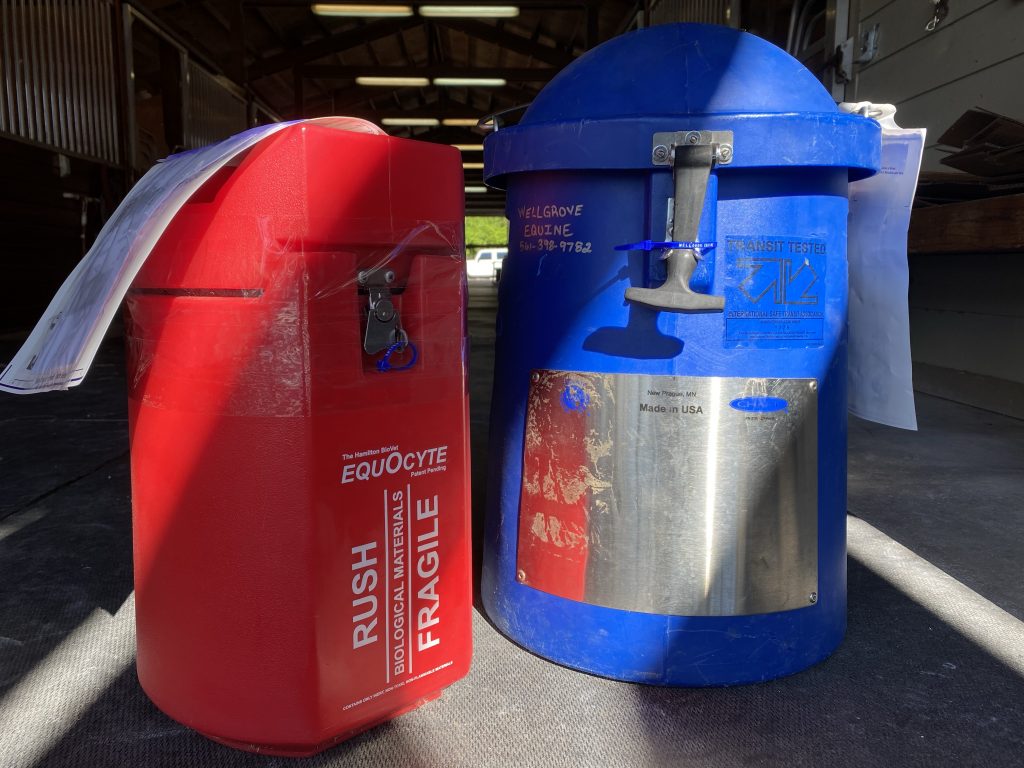Lets Talk About OPU with Dr. Alex Rocha

What is OPU?
Ovum pick-up (OPU), also called transvaginal oocyte aspiration (TVA), consists of aspirating the contents of ovarian follicles in an attempt to harvest the oocytes (“eggs”) from these follicles. Once in possession of the oocytes, they can be shipped to a laboratory to be fertilized, and hopefully generate embryos. The OPU is performed with the mare standing in stocks, and under sedation for about 30-40 minutes. During the procedure, most follicles ³ 5-10 mm in diameter can be aspirated, regardless of the stage of the reproductive cycle, resulting in the recovery of oocytes from about 50 to 70% of the follicles aspirated.
How will my mare handle this procedure?
Most mares handle the OPU well, and complications are uncommon. Nonetheless, it is an invasive procedure, and it’s prudent to observe them for signs of colic or discomfort, fever, inappetence, and to keep them off work for 72 hours following the oocyte aspiration.
How is an embryo created?
In the laboratory, oocytes are incubated to undergo maturation before they can actually be fertilized. Currently, the majority of the equine embryos produced in vitro are generated with the use of a technique called intracytoplasmic sperm injection (ICSI), in which fertilization is achieved by injecting a single sperm cell into the oocyte. Following a period of incubation and culture, the ones that develop into embryos can be either transferred into a recipient mare, or frozen and stored to be transferred at a future date. In the last decade, as in vitro equine embryo production systems became more efficient, consistent, and affordable, the combination of OPU and ICSI gained considerable popularity among horse breeders.
What problem does this solve?
Here are just some of the reasons that make OPU-ICSI so appealing to several breeders.
- The possibility of obtaining offspring from mares that are no longer productive using conventional breeding methods,
- Stallions with very poor semen quality or insufficient semen supply for artificial insemination are now viable breeding candidates
- Performance mares during their prime can be bred due to the convenience and flexibility of scheduling an OPU at any given time during the year, with no need to monitor reproductive cycles;
- The ability to use more than one stallion on the same ICSI cycle; as well as the chance of producing multiple embryos following one procedure,
How successful is this?
But, since this is biology and not math, we do not get everything we wish for every single time. Roughly, 7 out of 10 OPU procedures will result in the production of at least one embryo through ICSI. The good news is that, after an unsuccessful attempt, the mare can be aspirated again in 2-3 weeks. It’s worth mentioning that for some mare/stallion combinations, OPU-ICSI may work wonders, and for others it can be totally unproductive. At the ICSI lab, it’s expected that 60% of the oocytes received will mature and be injected with a single sperm, and out of these, 20-40% will turn into embryos (when embryos are produced). And yes, that’s definitely a numbers game: the more oocytes we get during an OPU – provided they are of good quality, and handled appropriately –, the better the chances of getting an embryo. The number of oocytes, in turn, depend on the number of follicles present on the ovaries at the time of the aspration.
How do I know if ICSI is a good option for me?
At Wellgrove Equine, we can help you understand if OPU-ICSI is a good choice for your breeding goals. Feel free to contact us with any questions or concerns regarding these procedures.
 Oocytes recovered from an OPU at WellGrove Equine
Oocytes recovered from an OPU at WellGrove Equine Dr. Alex Rocha and Dr. Erin Newkirk performing an OPU at WellGrove Equine
Dr. Alex Rocha and Dr. Erin Newkirk performing an OPU at WellGrove Equine After the OPU procedure, the oocytes are
After the OPU procedure, the oocytes are
counted and packaged to ship to the client’s desired ICSI lab. The oocytes recovered from an OPU procedure at WellGrove Equine ready to ship out (red container). We also helped ship the frozen semen to be used for the ICSI with the recovered oocytes (blue container).
The oocytes recovered from an OPU procedure at WellGrove Equine ready to ship out (red container). We also helped ship the frozen semen to be used for the ICSI with the recovered oocytes (blue container).
